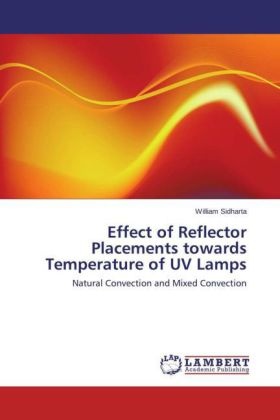Read more
Ultraviolet light emission has an objective to kill bacteria in some processes such as curing, sterilization, disinfection, etc. An inefficiency value of fluorescent ultraviolet lamp will convert the electricity energy to be thermal energy instead of ultraviolet light radiation, so it causes the high temperature of fluorescent ultraviolet lamp tube. During the ultraviolet light emission, high temperature is avoided because it would generate an imperfection to the product. In addition, ambient temperature also would affect the fluorescent lamp performance itself.Thus, effect of reflector placements towards temperature of UV lamp was considered to be studied further. In this study, two modes of convection that consists of natural convection and mixed convection are discussed.
About the author
William Sidharta received his M.S. of mechanical engineering from Southern Taiwan University of Science and Technology. He also has completed his bachelor study of mechanical engineering in Atma Jaya Catholic University of Indonesia. His research interest includes heat transfer and CFD simulation.

